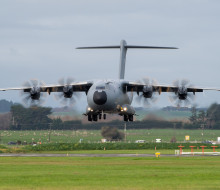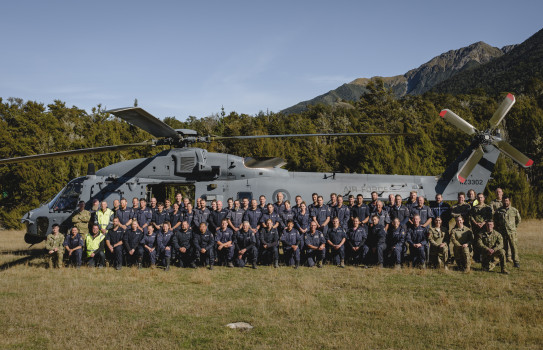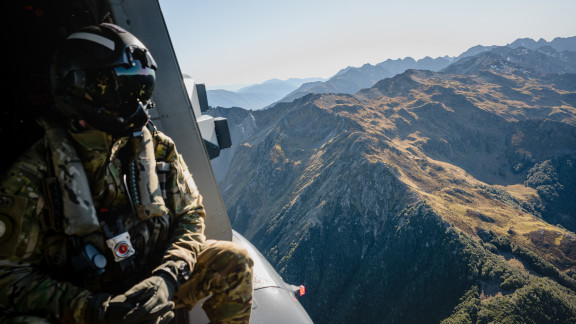
European air forces flying in for New Zealand visit
23 July 2024
Unfortunately you are viewing this website on an outdated browser which does not support the necessary features for us to provide an adequate experience. Please switch to a modern browser such as latest version of Google Chrome, Mozilla Firefox, Apple Safari or Microsoft Edge.
Ngā mihi nui
New Zealand Police search and rescue teams are often called on to find people in the most inhospitable parts of the country.
That’s why they say training with the Royal New Zealand Air Force’s No. 3 Squadron in a remote part of Marlborough recently was an extremely valuable exercise.
Just over 40 police search and rescue students and 14 directing staff joined NH90 helicopter crews at Dip Flat at the base of St Arnaud Range, on the banks of the Wairau River. For many of the students it was the first time training in the helicopters.
NZ Police National Search and Rescue Capability Coordinator Senior Sergeant Lea Smith said the course was a foundation for students who had recently joined Police search and rescue.
“They get a good grounding in basic search and rescue field skills and search management skills.”
The training was a success with the students becoming familiar with the helicopter and winching, he said.

40 police search and rescue students and 14 directing staff joined NH90 helicopter crews at Dip Flat.
“Every team member managed at least once to be flown, winched, and/or hovered throughout the exercise, getting exposure to many of the different techniques involved with being deployed in that aircraft.”
Police search and rescue teams worked in a wide variety of environments, including urban, rural, on the water, subterranean and in the back country. The harsh conditions for training in the ranges surrounding Dip Flat were “fantastic” for challenging and testing our people, Senior Sergeant Smith said.
“The practical application of this course, especially being deployed remotely in challenging terrain, all adds to the picture and, as a foundation, it's a great starting block to build from.”
NH90 pilot Flight Lieutenant Hayley Vincent said it was always beneficial training with Police and made it easier when there were real-life scenarios that both services were called to help.
“The professionalism and efficiency of the Police is appreciated, especially when we're tight on timings and want to move people in and out, they always know what they're doing.”
During the training the NH90 crews flew teams of about half a dozen students to landing zones around the Wairau Valley.

Search and rescue training with NZ Police | Royal New Zealand Air Force
“The police had areas they needed to get to, so we would push to the south and into some pretty awesome looking valleys. We didn't do a whole lot of work up the top of the mountains, just due to the nature of the tasking.”
The colder months brought its own challenges to the team, especially for the passengers and helicopter loadmasters in the back of the helicopter, Flight Lieutenant Vincent said.
“When it’s around 7°C outside and you’re flying in and around the hills, sitting in the doorways, the wind chill factor can get to around -25°C if it's a particularly cold day. So the loadmasters tend to rug up really, really well.”